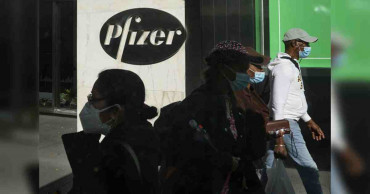US FDA
What’s ahead for COVID-19 vaccines?
Pfizer’s surprising news that its COVID-19 vaccine might offer more protection than anticipated — an announcement right after a fraught US presidential election campaign — is raising questions about exactly how the different shots will make it to market.
Pfizer Inc and the maker of the other leading US vaccine candidate, Moderna Inc, have been cautioning for weeks that the earliest they could seek regulatory approval for wider use of their shots would be late November. In Britain, AstraZeneca recently said it hoped to prove its own vaccine was effective by year’s end.
Late on Monday in a series of tweets President Donald Trump accused the US Food and Drug Administration and Pfizer of waiting until after the election to announce its positive vaccine news for political reasons. Pfizer did not receive data from independent trial monitors until Sunday, however. The FDA was not involved in Pfizer’s decision to announce its early results and made no announcements of its own.
The hard truth: Science moves at its own pace. While COVID-19 vaccines are being developed at record speeds in hope of ending the pandemic, when they’re ready for prime time depends on a long list of research steps including how many study volunteers wind up getting the coronavirus — something scientists cannot control.
Here’s a look at the process:
How the study works
Pfizer and its German partner BioNTech have enrolled nearly 44,000 people in final testing of their vaccine. Neither participants, their doctors nor Pfizer know who gets the real vaccine and who gets a dummy shot. They get a second dose about three weeks after the first.
And then another week after the second dose, key tracking begins: Counting anyone who experiences COVID-19 symptoms and tests positive for the virus as participants go about their daily routines, especially in hot spots.
Late-stage testing of other vaccine candidates is similar, varying slightly in the number of volunteers and timing.
How to tell shots work
Every vaccine study is overseen by an independent “data and safety monitoring board,” or DSMB. These boards include scientists and statisticians who have no ties to the vaccine makers.
Before a study is complete, only the DSMB has the power to unlock the code of who got the real vaccine and who got placebo, and to recommend if the shots are working well enough to stop testing early.
Those boards take sneak peeks at pre-determined times agreed to by the manufacturer and the Food and Drug Administration. The first interim analysis for Pfizer came Sunday. The company reported its data monitors had counted 94 infections so far -- and that among those initial cases, the vaccine appeared 90 percent effective.
But the study isn’t stopping: To be sure of protection, it’s set to run until there are 164 infections. The more COVID-19 cases occur in the trial, the better idea scientists will have of just how protective the shots really are.
5 years ago

